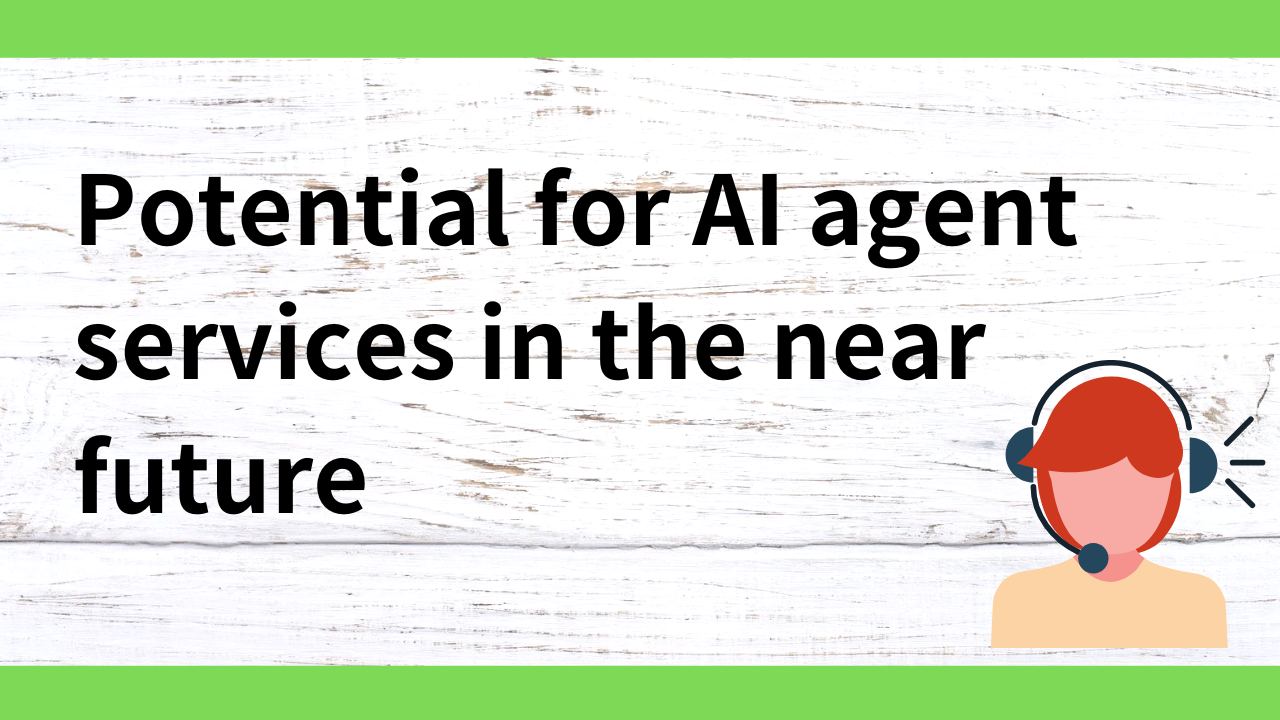Introduction.
Today, the evolution of AI agents has led to the rapid development of services that streamline and automate tasks previously performed manually by individuals and companies. In particular, the combination of prompt engineering and node-based processing architectures is making the management of complex dependencies and asynchronous tasks a reality. This section examines how AI agents will change the services of the future as a result of these technological innovations.
Node-based task processing architecture
Prompt Chain and “Chain of Thought” Evolution
Tools such as Didify focus on techniques that treat prompts as nodes and link them together as a “Chain of Thought. This approach offers the following advantages
- Task Decomposition and Integration: Decompose tasks into smaller units and integrate them in sequence to achieve a series of complex processes.
- Streamlined error handling: Because the prompt is an independent node, only the part of the prompt where the error occurred can be reprocessed.
- High customizability: Optimizing prompts on a node-by-node basis allows for flexible AI responses to situations and objectives.
In particular, by working with an asynchronous processing-friendly environment such as Node.js, real-time responsiveness and parallel processing efficiency are improved.

Potential of GraphAI and Graph Structure
Techniques such as GraphAI utilize a graph structure with nodes and edges to explicitly define and manage dependencies between tasks. This approach has the following advantages
- Visualization and management of dependencies: Even in complex projects, the relationships between tasks can be visualized as graphs.
- Efficient asynchronous processing: When one node completes, the next begins processing immediately, enabling lean resource allocation.
- Scalability: New nodes (tasks) and edges (relationships) can be added dynamically, making the system highly scalable.
This ensures that AI agents can process multiple data sources and tasks simultaneously while still ensuring accurate output that accounts for dependencies.

Specific Applications
1. Business process automation
In the past, companies required manual collaboration when managing tasks across multiple departments. In contrast, AI agents can
- Management Decision Support: Integrate data analysis results in real time and propose the next decisions.
- Contract and Sales Management: Treat sales progress and customer response schedules as nodes and track progress automatically.
- Asynchronous support: Streamlines work while taking into account task dependencies between departments.
2. Customized AI for individuals
AI agents play a major role in the daily lives of individuals.
- Scheduling: Retrieves calendar events and suggests optimal time management (e.g., natural voice response like a Talking Cat robot).
- Information Gathering: Gathers news and specialized information at specified times and provides analysis results.
- Health management: Real-time analysis of data from wearable devices to provide health advice.
Framework for developers
With frameworks such as Didify and GraphAI, an environment is being created where developers can easily build AI applications. This opens the door for non-engineers to build AI services.
The usage of Interview AI
- Feature
- Transcribes an hour’s worth of audio in just 15 seconds
- Minimize editing by automatically converting to a natural interview format.
- Highly accurate voice-to-text conversion, ensuring that no important conversations are missed.
- A user-friendly interface makes it easy for anyone to use.
- Example usage
- Instantly transcribe interview recordings and use them directly as shared materials.
- Quickly organize and utilize transcripts of internal interviews and client conversations.
- Help busy HR professionals quickly review candidate interviews and plan the next steps.
Future Challenges and Possibilities
While the development of these technologies has been remarkable, challenges remain.
- Privacy and Security: Measures against data leaks and security risks are essential, especially when dealing with personal data.
- Cost-efficiency: Complex graph processing is resource-intensive and requires research on efficient algorithms.
- Lack of standardization: Currently, interoperability among tools is limited and needs to be standardized.
By overcoming these challenges, we can look forward to a future in which AI agents become more accessible and practical and become indispensable partners for individuals and businesses.
summary
The AI agents of the near future will leverage node-based prompt chains and graph structures to efficiently handle asynchronous and complex dependencies, enabling automation of tasks ranging from everyday life to business. With the evolution of tools such as Didify and GraphAI, complex tasks that were previously impossible are becoming a reality, and the impact of these technologies on society as a whole is immeasurable.


